
Pyrennean Valleys
Pyrennean Valleys
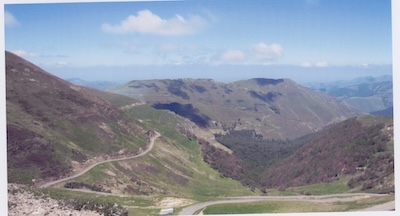 The fast way to travel from Western France
to Northern Spain is via the (Atlantic) coastal motorway.
The next major crossing of the Pyrennees, 100 miles to the
south-east, is the 5-mile long Somport Tunnel, opened in
2003. In between there is a succession of minor passes.
Most are closed in winter, but all are pleasant routes in
summer if you are in no hurry to reach the destination.
And the entire region is an attractive destination in
itself – far more so (to us) than the congested Biarritz
area. The following will give a flavour.
The fast way to travel from Western France
to Northern Spain is via the (Atlantic) coastal motorway.
The next major crossing of the Pyrennees, 100 miles to the
south-east, is the 5-mile long Somport Tunnel, opened in
2003. In between there is a succession of minor passes.
Most are closed in winter, but all are pleasant routes in
summer if you are in no hurry to reach the destination.
And the entire region is an attractive destination in
itself – far more so (to us) than the congested Biarritz
area. The following will give a flavour.
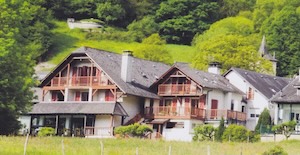 This is the road down from the Porte de
Larrau. We remember once driving from Spain in brilliant
sunshine, reaching the top – to be confronted by near-zero
visibility for the drive on to Larrau and its logis.
This is the road down from the Porte de
Larrau. We remember once driving from Spain in brilliant
sunshine, reaching the top – to be confronted by near-zero
visibility for the drive on to Larrau and its logis.
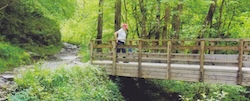 Larrau itself is at a crossroads. A
succession of linked minor roads runs along the line of
the Pyrenees. East of Larrau this leads to the Defile de
Holzarte, Gorges of Kakuerta, and isolated Ste Engrace.
West of Larrau is the Iraty Plateau.
Larrau itself is at a crossroads. A
succession of linked minor roads runs along the line of
the Pyrenees. East of Larrau this leads to the Defile de
Holzarte, Gorges of Kakuerta, and isolated Ste Engrace.
West of Larrau is the Iraty Plateau.
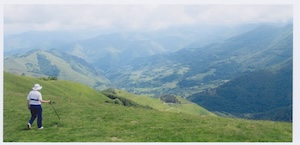 From there one can continue directly to St
Jean Pied de Port, or explore a network of minor lanes
around Esterencuby. One lane leads to the remote logis
“Sources de la Nive”, which is actually very close to the
border.
From there one can continue directly to St
Jean Pied de Port, or explore a network of minor lanes
around Esterencuby. One lane leads to the remote logis
“Sources de la Nive”, which is actually very close to the
border.
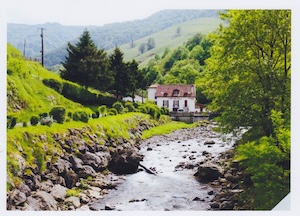 St Jean de Pied de Port is a bustling
town, the pausing point for pilgrims taking the
traditional route to Roncevalles in Spain and then onward
towards Santiago de Compostela. Another way into Spain is
via St Etienne de Baigorry, where one can either go
directly over the Col de Ispeguy, or drive via the
Aldudes. Part of the Aldudes is the ‘Pays Quint’, which
has a strange status.
St Jean de Pied de Port is a bustling
town, the pausing point for pilgrims taking the
traditional route to Roncevalles in Spain and then onward
towards Santiago de Compostela. Another way into Spain is
via St Etienne de Baigorry, where one can either go
directly over the Col de Ispeguy, or drive via the
Aldudes. Part of the Aldudes is the ‘Pays Quint’, which
has a strange status.
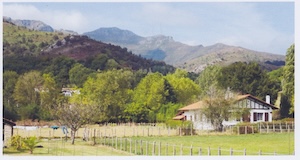 That area is part of Spain but is
administered by France. The inhabitants are French
Citizens by default but have the right to dual
citizenship. Moreover, France pays rent to Spain for the
use of pastures in this area. After entering Spain itself
one can continue far on traffic-free roads into northern
Spain.
That area is part of Spain but is
administered by France. The inhabitants are French
Citizens by default but have the right to dual
citizenship. Moreover, France pays rent to Spain for the
use of pastures in this area. After entering Spain itself
one can continue far on traffic-free roads into northern
Spain.